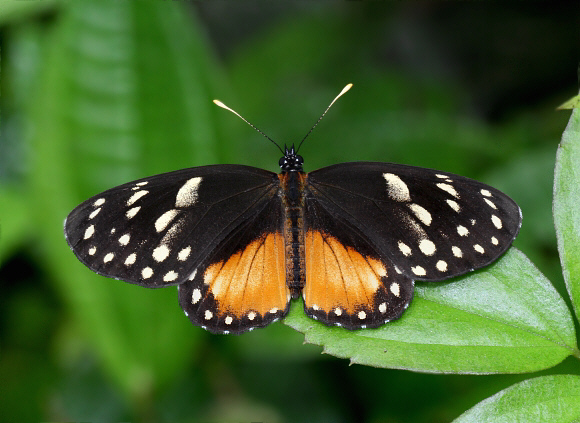
Introduction
The tribe Melitaeini is of worldwide distribution. It includes the Crescents and Checkerspots of North America, and also many familiar European species such as the Marsh, Spotted, and Heath Fritillaries.
Eresia are closely related to Castalia, Anthanassa, and Janatella, in fact that these genera can only be distinguished by microscopic examination of the male genitalia.
The 20 Eresia species fall into 2 distinct groups. Some e.g. nauplius are black with bands or patches of white. Most however are strongly marked in black and orange, and regarded as Batesian mimics of toxic Ithomiinae.
Eresia ithomioides is distributed from Nicaragua to Ecuador. There are 8 subspecies, all of which are mimics of various toxic Ithomiines. The illustrated race poecilina which is found from Costa Rica to Colombia is a mimic of Tithorea tarricina.
Habitats
This species is found in cloudforests at elevations between about 1000-2000m.
Lifecycle
The eggs are cream coloured, and laid in batches of up to 70 beneath leaves of Pilea ( Urticaceae ). The larva is dark green with orange spikes and white dots along the back. The head and legs are orange. Its pupa is olive-brown, shiny, and suspended by the cremaster from stems.
Adult behaviour
The butterflies have a slow fluttery flight. They are usually only encountered in sunny conditions, and can be seen as singletons flying along roadsides or other forest-edge habitats. Males are often seen imbibing mineralised moisture from damp sand or rocks.
